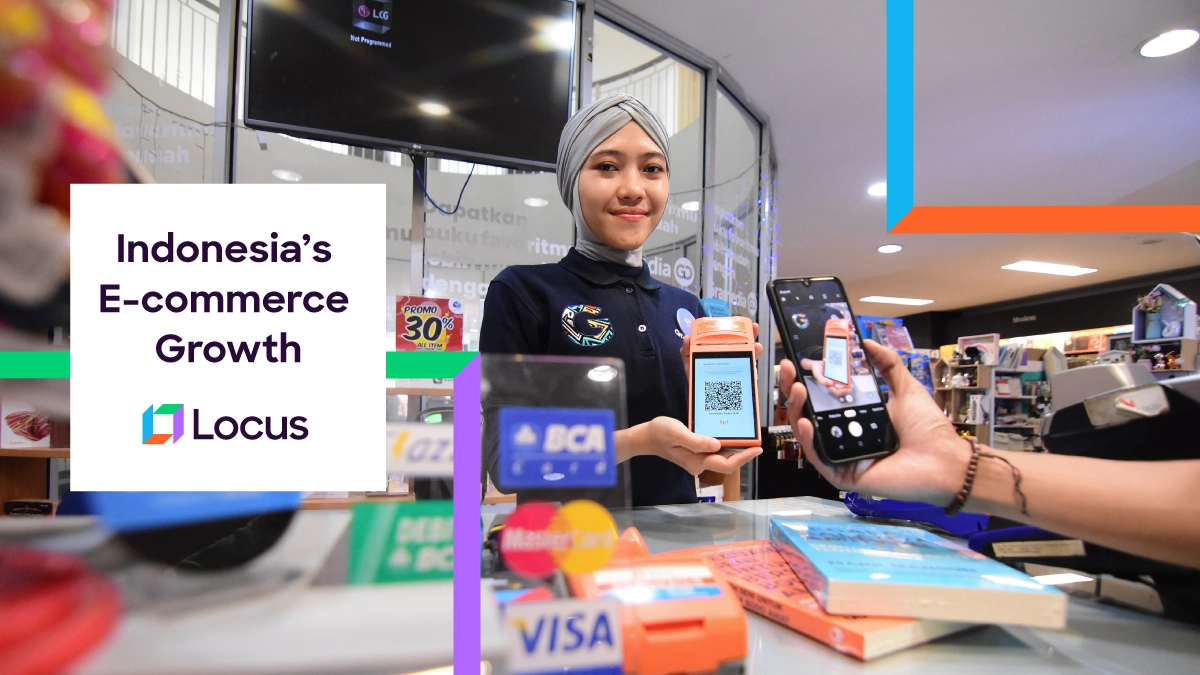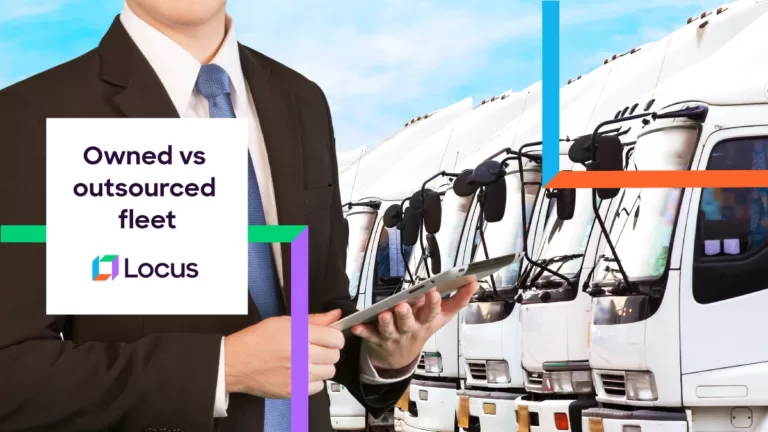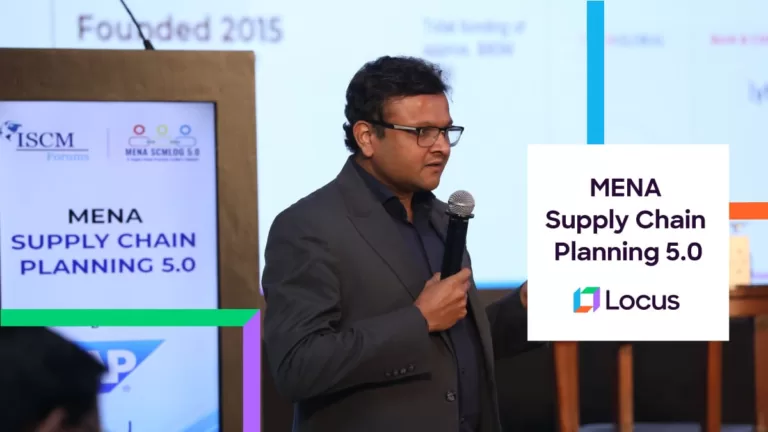E-Commerce
How Bukalapak is Leading Indonesia’s E-commerce Growth With Last-Mile Technology Solutions
Sep 27, 2022
5 mins read

E-commerce in Southeast Asia (SEA) has seen staggering transaction growth in recent years thanks to strong mobile and internet penetration, and increasing consumer expectations around fulfillment. To unravel the story behind this growth and its complexities, Albert Koto, Head of Mitra supply chain at Bukalapak, one of the biggest e-commerce businesses in Indonesia, got in conversation with Malay Shah, Senior Vice President of India, Middle East, Rest of the World, and Southeast Asia operations in this Locus’ In-Focus webinar series.
In this fourth episode, “Southeast Asia’s E-commerce: Winning the Next Wave of Shoppers,” the panelists did a deep-dive on e-commerce trends in the SEA region, last-mile fulfillment challenges for Bukalapak in SEA, and how technology helped them counter them.
Rise in e-commerce users and volume
The Southeast Asian region has witnessed tremendous growth in its e-commerce customer base in recent years. The IDC Digital payments report of 2021 stated that the SEA region had more than 222 million e-commerce users and is expected to grow to around 411 million users by 2025, an 85% growth rate in e-commerce for this region in the next three to four years.
The panelists then looked at Indonesia, SEA’s most populous country. The future is bright for e-commerce in Indonesia as by 2026, e-commerce in the country is expected to be worth $17.4 billion.
The Institute of Southern Asian studies has shared that out of 278.3 million people in Indonesia, 138 million, or roughly 50% of the total population, do their shopping online. This is why the mobile-first and cloud-first approach of Bukalapak has been a large factor for its success, as consumers enjoy an endless and wide assortment of products that is not possible in physical stores.
How O2O E-commerce is empowering Indonesia’s Mom and Pop stores
When asked about the Online-Offline E-commerce (O2O) e-commerce space in Indonesia, Albert mentioned that before the birth of O2O, there were only a few e-commerce players and that O2O bridges the offline and online shopping channels.
Albert also spoke about Mom-and-pop stores are getting empowered by technology to broaden their categories to be sold. With a mobile phone, internet, app, and a few clicks, they can easily purchase products without going out of stores. This has saved them time, money, and energy to buy a wide range of assortment in a hassle-free way.
Intermediate Distribution Centers (IDC) + Wholesale connect = Traction at Scale
With Bukalapak being a heavyweight in O2O E-commerce, Malay wanted to know how it makes its procurement process easier and efficient. explained that the IDCs helped them send goods from distribution centers to end customers (mom-and-pop stores).
To make this process super-efficient, they connect large wholesalers with mom-and-pop stores using this IDC model. This strategy has expedited its scalability throughout Indonesia and improved its traction with mom-and-pop stores.
Challenges that Bukalapak faces in its last mile?

The conversation also covered the last-mile challenges that Bukalapak faces when catering to the expectations of tech-savvy customers such as order volatility, traffic and Service Level Agreement (SLA) adherence, and matching up to the demands for fast deliveries while keeping costs under control.
Albert also shared the strategies Bukalapak uses to counter these challenges including adopting a Hybrid Delivery model to achieve economies of scale and optimize fleet utilization. He also spoke about how with Locus’ offerings, Bukalapak helps fleet managers to give rest to vehicles that cross the previously set threshold values. This ensures that vehicles don’t spend too much time on the road and it minimizes the incidence of any accidents too.
How Locus helped Bukalapak transform its last-mile
The conversation also touched on how Locus’ e-commerce logistics solutions helped Bukalapak drive transformation in its last mile. Albert spoke about how with its SLA-based routing, Locus’ dispatch management software shortens the route planning time to 20-30 minutes. It helps them accurately assign the orders to drivers and monitor their progress on the live dashboard. This helps them identify any potential SLA breaches and act upon them quickly.
Albert also covered how Locus’ offerings help operation managers allocate the optimal number of vehicles to be used in a fleet, and its historical data access helps them effectively plan the number of drivers to serve in a delivery zone the next week, day or month.
With its real-time fleet tracking abilities and advanced analytics, Locus’ dispatch software helps Bukalapak spot the hidden inefficiencies of the on-ground workforce. Its real-time visibility on route deviations and driver performance helps them find the performance gaps of drivers and rectify them in the upcoming deliveries.
Locus’ last-mile delivery software enables Bukalapak to guide drivers with daily dispatch plans and street-level routing instructions with turn-by-turn navigation. Its dynamic rerouting feature allows its drivers to handle real-time returns, cancellations, and reattempted deliveries.
Quick access to data insights: The need of the hour
Albert mentioned that it is quite challenging to maintain an efficient delivery process without neglecting the quality of service to customers. He summed up that quick access to data insights is the need of the hour for logisticians or supply chain professionals. With these advanced data insights, operation managers can provide tactical and strategic proposals to the management.
The talk concluded by noting that Locus’ offerings have made the lives easier for Bukalapak to improve cost efficiency and SLA adherence without compromising on workforce empowerment, sustainability goals, and customer experience.
Talk to our experts to know how to maximize your last-mile efficiency while meeting the customer service levels like Bukalapak!
Related Tags:

Fleet Optimization
Owned Vs Outsourced Fleet: What’s Best for Your Fast Retail Business
Retail businesses are finding it difficult to decide whether owned or outsourced fleet suits them. This decision determines their business growth.
Read more
Supply Chain Optimization
Moving from a Transactional to a Collaborative Supply Chain in the Middle East
In SCMLOG 5.0, a Supply Chain Practice Leader’s Summit, industry leaders addressed challenges in moving from a transactional to a collaborative supply chain.
Read moreMOST POPULAR
EDITOR’S PICKS
SUBSCRIBE TO OUR NEWSLETTER
Stay up to date with the latest marketing, sales, and service tips and news


How Bukalapak is Leading Indonesia’s E-commerce Growth With Last-Mile Technology Solutions